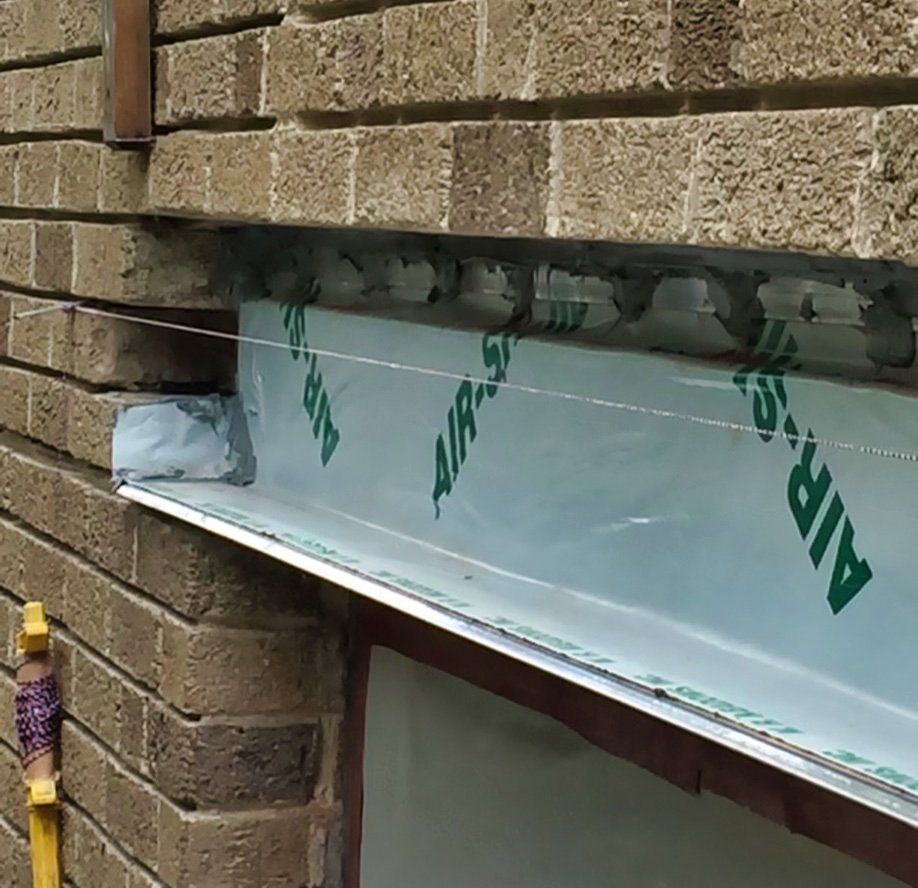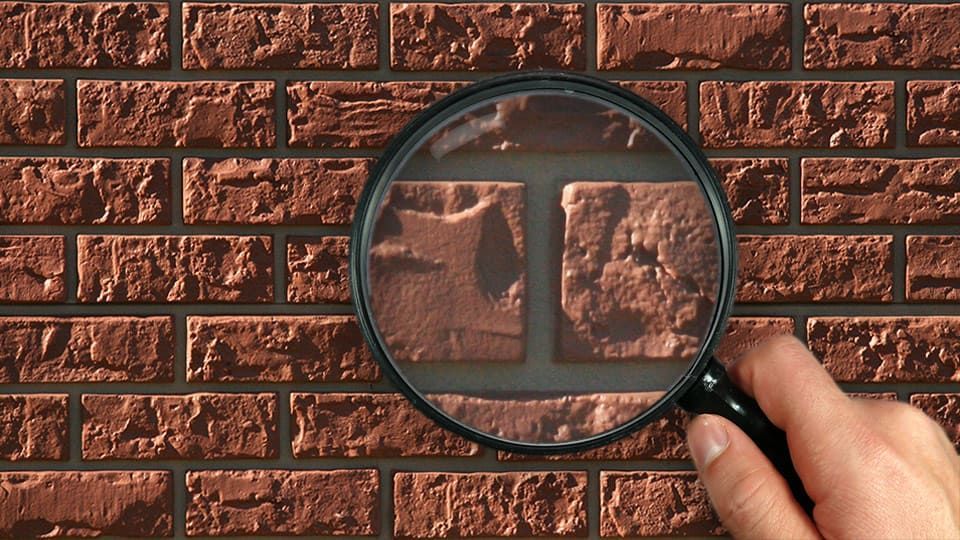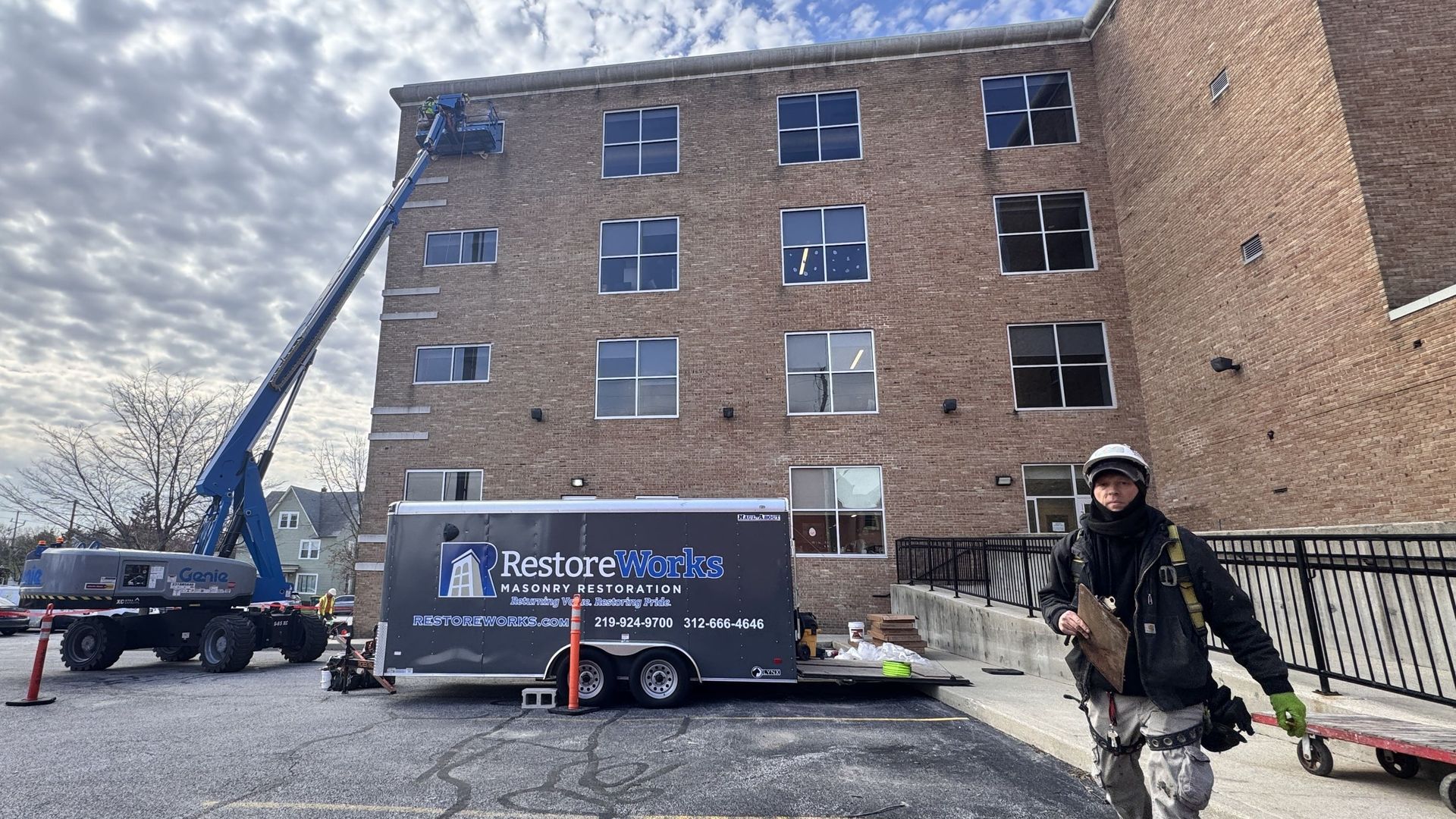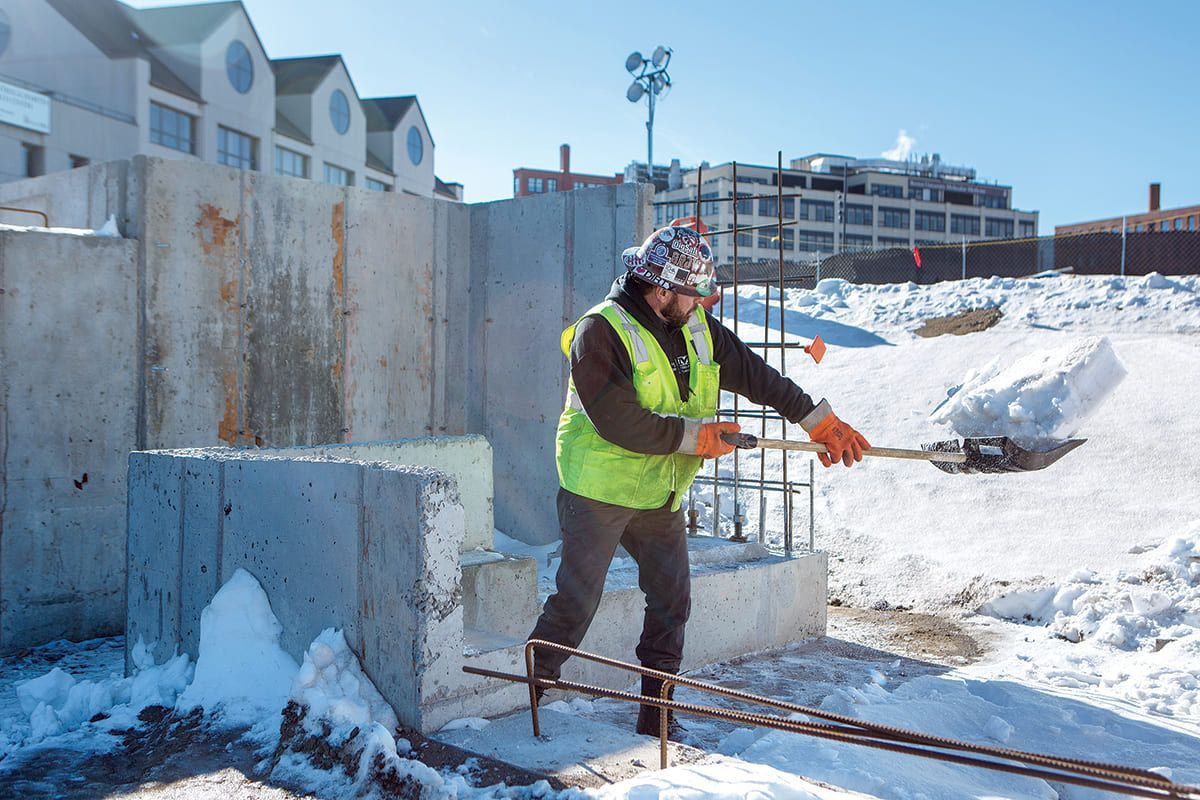How do you know your property needs masonry wall flashing?
Are there mortar cracks or missing mortar around the upper corners of a door or window?
You might have a damaged or failing lintel. Our humid summers and freezing winter weather can have a very destructive effect on our buildings. When lintel or shelf angle damage is left untreated, it can compromise the building’s structural integrity and lead to collapsed walls. What is masonry wall flashing, and how can RestoreWorks help you?
What is Flashing, and What Does It Do?
Masonry wall flashing is a thin material installed to prevent water from penetrating a building. It provides a seal at lintel and shelf angle joints exposed to the weather, and is required at:
- Lintels above openings
- Base of walls
- Beam pockets
- Penetrations (ventilation, electrical, plumbing)
- Under sills, rowlocks, and caps.
There are two general types of flashing, external (exposed) and internal (concealed).
External/exposed flashing.
External flashing prevents moisture from penetrating masonry walls where the wall intersects with a roof.
Internal/concealed flashing.
Internal flashings are necessary for lintel replacement in Chicago. They catch water that penetrates a masonry wall and drains it away to the outside of the wall. It is compulsory at the heads of windows, doors, and window sills - wherever a cavity is interrupted.
The flashing material used for lintel repair and replacement depends on the lintel’s location and the type of building. Internal flashings are mostly made from sheet metals such as galvanized steel but also waterproof membrane materials, plastic, or bituminous-coated fabrics.
RestoreWorks has the experience and expertise to perform lintel, shelf angle, and through wall repairs on all types of buildings, whether historic, government, churches, museums, residential, or commercial.
Building codes dictate that flashing be detailed and designed, so project drawings show where it must be installed.

The Importance of Proper Flashing Installation
Why would lintel repair in Chicago be required?
Most buildings are constructed with brick or stone, and weather conditions can damage lintels over time. Rusted steel lintels expand horizontally and vertically, stressing the surrounding mortar and brick, resulting in cracks and missing mortar. Water will penetrate the cracks if left unattended, causing damage. Gaps where different materials intersect, and joints where buildings expand and contract, are also at risk.
Why should flashing be properly installed?
Cuts down on maintenance.
Moisture commonly infiltrates areas where masonry flashing joins or laps. Extend the flashing and add the correct sealant in these areas, and water won’t have an opportunity to sit and eventually penetrate the structure, thus cutting down on maintenance.
Extends the building’s lifetime.
Material compatibility has an impact on the life expectancy of a building. Correctly installed compatible flashing materials extend a building’s lifetime.
Prevents secondary mold.
Masonry water damage can be present for a long time before you notice it and even cause mold growth within secondary walls, which is a health risk. Proper flashing installation and regular inspections will cut down on this risk.
When RestoreWorks replaces lintels and shelf angles, it restores structural integrity, improves water tightness, and adds years to the building’s useful life.
The Evolution of Flashing in Masonry Construction
Older buildings have corbels and recesses to keep moisture out, but lintels and shelf angles used in modern architecture need flashing to serve the same purpose.
Flashing materials have evolved to include non-metal materials (flexible flashing materials), such as PVC and acrylic, with chemical compatibility that make them resistant to ultraviolet light and varying temperatures.
Today you get adhesive-backed masonry wall flashings that are easy to install, although they also have their limitations.
Cracks or missing mortar around doors and windows could mean moisture penetrated the building, and you urgently need a window lintel replacement and other repairs done.
Don’t wait until you notice water damage in your building.
RestoreWorks will perform a thorough inspection to identify the cause of your problem, the extent of the damage, and what is required to solve the problem.
We are experts at commercial masonry restoration in Chicago and NW Indiana, and masonry wall flashing specialists.
Contact the RestoreWorks team today.












